 W
WSir Ralph Abercromby was a Scottish soldier and politician. He twice served as MP for Clackmannanshire, rose to the rank of lieutenant-general in the British Army, was appointed Governor of Trinidad, served as Commander-in-Chief, Ireland, and was noted for his services during the French Revolutionary Wars.
 W
WPrince Arthur, Duke of Connaught and Strathearn, was the seventh child and third son of Queen Victoria and Prince Albert. He served as the Governor General of Canada, the tenth since Canadian Confederation and the only British prince to do so. In 1910 he was appointed Grand Prior of the Order of St John and held this position until 1939.
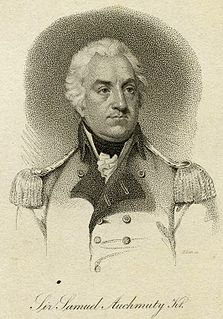 W
WLieutenant General Sir Samuel Auchmuty, was an American-born British Army general, who served in a number of military campaigns in India, Africa and South America during the Napoleonic period.
 W
WGeneral Sir David Baird, 1st Baronet, GCB was a British Army officer.
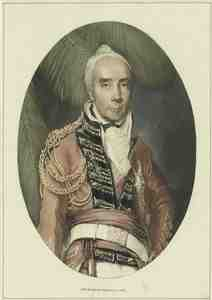 W
WGeneral Sir George Beckwith KB was a British Army officer.
 W
WField Marshal Sir Edward Blakeney was a British Army officer. After serving as a junior officer with the expedition to Dutch Guiana and being taken prisoner by privateers three times suffering great hardship, he took part in the Anglo-Russian invasion of Holland in 1799. He also joined the expedition to Denmark led by Lord Cathcart in 1807. He went on to command the 2nd Battalion of the 7th Regiment of Foot and then both battalions of that regiment at many of the battles of the Peninsular War. After joining the Duke of Wellington as he marched into Paris in 1815, Blakeney fought in the War of 1812. He then commanded a brigade in the army sent on a mission to Portugal to support the constitutional government against the absolutist forces of Dom Miguel in 1826. His last major appointment was as Commander-in-Chief, Ireland, a post he held for nearly twenty years.
 W
WGeneral Sir George Brown, was a British soldier notable for commands in the Peninsular War and the Crimean War.
 W
WGeneral John Burgoyne was a British army officer, dramatist and politician who sat in the House of Commons from 1761 to 1792. He first saw action during the Seven Years' War when he participated in several battles, most notably during the Portugal Campaign of 1762.
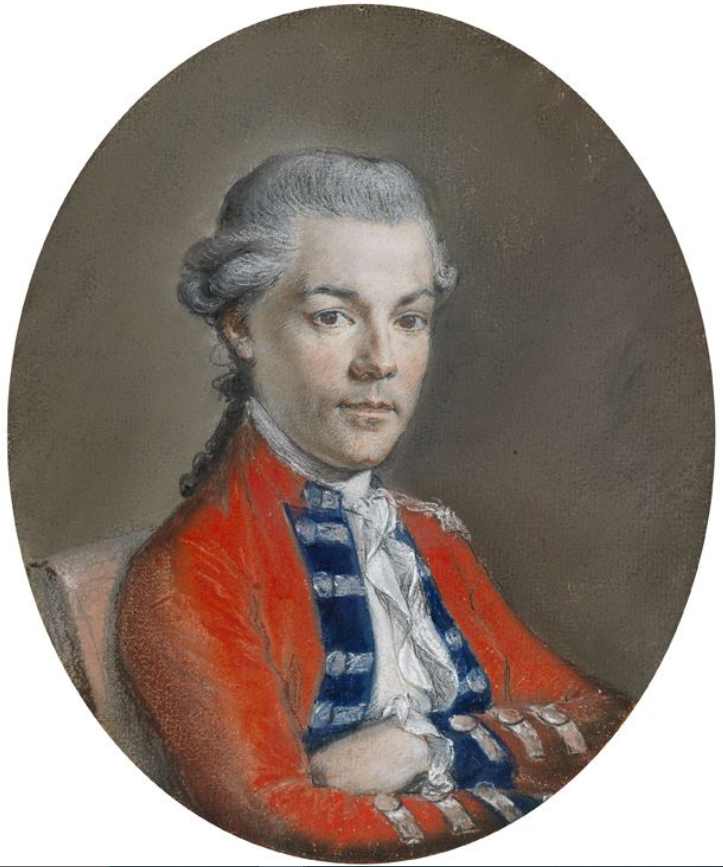 W
WGeneral Henry Lawes Luttrell, 2nd Earl of Carhampton PC was a politician and soldier. He was the son of Simon Luttrell, 1st Earl of Carhampton and brother-in-law of Prince Henry, Duke of Cumberland and Strathearn.
 W
WGeneral William Schaw Cathcart, 1st Earl Cathcart was a Scottish soldier and diplomatist.
 W
WField Marshal Stapleton Cotton, 1st Viscount Combermere, was a British Army officer, diplomat and politician. As a junior officer he took part in the Flanders Campaign, in the Fourth Anglo-Mysore War and in the suppression of Robert Emmet's insurrection in 1803. He commanded a cavalry brigade in Sir Arthur Wellesley's Army before being given overall command of the cavalry in the latter stages of the Peninsular War. He went on to be Commander-in-Chief, Ireland and then Commander-in-Chief, India. In the latter role he stormed Bharatpur—a fort which previously had been deemed impregnable.
 W
WCharles Cornwallis, 1st Marquess Cornwallis,, styled Viscount Brome between 1753 and 1762 and known as the Earl Cornwallis between 1762 and 1792, was a British Army general and official. In the United States and the United Kingdom he is best remembered as one of the leading British generals in the American War of Independence. His surrender in 1781 to a combined American and French force at the Siege of Yorktown ended significant hostilities in North America. He later served as a civil and military governor in Ireland, where he helped bring about the Act of Union; and in India, where he helped enact the Cornwallis Code and the Permanent Settlement.
 W
WPrince William Augustus Edward of Saxe-Weimar-Eisenach, was a British military officer of German parents. After a career in the Grenadier Guards, he became Major General commanding the Brigade of Guards and General Officer Commanding the Home District in 1870, General Officer Commanding Southern District in October 1878 and Commander-in-Chief, Ireland in October 1885. He was promoted to field marshal in 1897 despite his career including no great military achievements.
 W
WGeneral Henry Edward Fox was a British Army general. He also served brief spells as Governor of Minorca and Governor of Gibraltar.
 W
WMajor General Sir Lovick Bransby Friend was a British Army major general and amateur sportsman. He served with the Royal Engineers and was Commander-in-Chief, Ireland during the 1916 Easter Rising. As a sportsman, Friend played in goal for the Royal Engineers in the 1878 FA Cup Final and first-class cricket for Kent County Cricket Club.
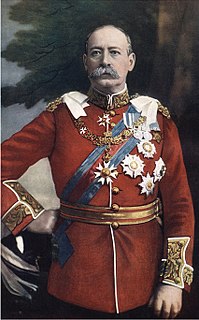 W
WField Marshal Francis Wallace Grenfell, 1st Baron Grenfell, was a British Army officer. After serving as aide-de-camp to the Commander-in-Chief, South Africa, he fought in the 9th Xhosa War, the Anglo-Zulu War and then the Anglo-Egyptian War. He went on to become Sirdar (Commander-in-Chief) of the Egyptian Army and commanded the forces at the Battle of Suakin in December 1888 and at the Battle of Toski in August 1889 during the Mahdist War. After that he became Governor of Malta and then Commander-in-Chief, Ireland before retiring in 1908.
 W
WGeneral Charles Stanhope, 3rd Earl of Harrington, styled Viscount Petersham until 1779, was a British Army officer and politician who sat in the House of Commons between 1774 and 1779 when he succeeded to the peerage as Earl of Harrington.
 W
WGeorge Augustus Eliott, 1st Baron Heathfield, was a British Army officer who served in three major wars during the eighteenth century. He rose to distinction during the Seven Years' War when he fought in Germany and participated in the British attacks on Belle Île (France) and Cuba. Eliott is most notable for his command of the Gibraltar garrison during the Great Siege of Gibraltar, which lasted from 1779 and 1783, during the American War of Independence. He was celebrated for his successful defence of the fortress and decisive defeat of Spanish and French attackers.
 W
WGeneral John Hope, 4th Earl of Hopetoun PC KB FRSE, known as the Honourable John Hope from 1781 to 1814 and as the Lord Niddry from 1814 to 1816, was a Scottish politician and British Army officer.
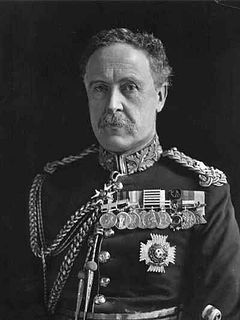 W
WGeneral The Honourable Sir Neville Gerald Lyttelton, was a British Army officer from the Lyttelton family who served against the Fenian Raids, and in the Anglo-Egyptian War, the Mahdist War and the Second Boer War. He was Chief of the General Staff at the time of the Haldane Reforms and then became Commander-in-Chief, Ireland.
 W
WGeneral Sir Cecil Frederick Nevil Macready, 1st Baronet,, known affectionately as Make-Ready, was a British Army officer. He served in senior staff appointments in the First World War and was the last British military commander in Ireland, and also served for two years as Commissioner of Police of the Metropolis in London.
 W
WSir Bryan Thomas Mahon, was an Irish born general of the British Army and senator of the short-lived Senate of Southern Ireland.
 W
WGeneral Sir John Grenfell Maxwell, was a British Army officer and colonial governor. He served in the Mahdist War in the Sudan, the Second Boer War, and in the First World War, but he is best known for ordering the execution of the leaders of the 1916 Easter Rising in Ireland. He retired in 1922.
 W
WGeneral Sir William Medows KB was an Englishman and a general in the British Army. He entered the army in 1756 and saw action in North America, the Cape, and India. In 1788 he was appointed Governor of Bombay, transferring to become Governor of Madras in 1790.
 W
WField Marshal Sir John Michel was a British Army officer. He commanded the 6th Regiment of Foot during the Eighth Xhosa War in 1851 and served as Chief of Staff of the British Army's Turkish contingent during the Crimean War in 1854 before transferring to India where he commanded the Malwa Field Force which pursued Tatya Tope in the aftermath of the Indian Mutiny. He then commanded the 1st Division at the Battle of Taku Forts in August 1860 during the Second Opium War and took part in the burning of the Old Summer Palace at Peking in October 1860 as a reprisal for the torture and murder of British prisoners before being appointed Commander of British Troops in China and Hong Kong in 1861. He later commanded the forces in British North America playing a key role in the organization of the militia volunteers in resistance to the Fenian raids invasions in 1866. His last appointment was as Commander-in-Chief of Ireland in 1875.
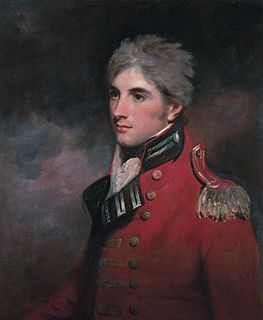 W
WSir George Murray was a British soldier and politician from Scotland.
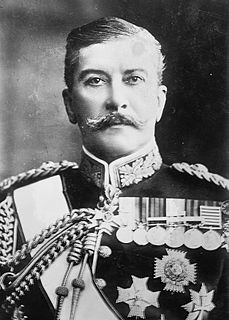 W
WGeneral Sir Arthur Henry Fitzroy Paget, was a soldier who reached the rank of General and served as Commander-in-Chief, Ireland, where he was partly responsible for the Curragh Incident.
 W
WField Marshal Frederick Sleigh Roberts, 1st Earl Roberts,, was a British Victorian era general who became one of the most successful British military commanders of his time. Born in India to an Anglo-Irish family, Roberts joined the East India Company Army and served as a young officer in the Indian Rebellion during which he won a Victoria Cross for gallantry. He was then transferred to the British Army and fought in the Expedition to Abyssinia and the Second Anglo-Afghan War, in which his exploits earned him widespread fame. Roberts would go on to serve as the Commander-in-Chief, India before leading British Forces to success in the Second Boer War. He also became the last Commander-in-Chief of the Forces before the post was abolished in 1904.
 W
WGeneral John Leslie, 10th Earl of Rothes KT was a senior British Army officer who became Commander-in-Chief of the Royal Irish Army between 1758 and 1767.
 W
WGeneral William Rose Mansfield, 1st Baron Sandhurst was a British military commander who served as Commander-in-Chief of India from 1865 to 1870.
 W
WField Marshal John Colborne, 1st Baron Seaton, was a British Army officer and colonial governor. After taking part as a junior officer in the Anglo-Russian invasion of Holland, Sir Ralph Abercromby's expedition to Egypt and then the War of the Third Coalition, he served as military secretary to Sir John Moore at the Battle of Corunna. He then commanded the 2nd Battalion of the 66th Regiment of Foot and, later, the 52nd Regiment of Foot at many of the battles of the Peninsular War. At the Battle of Waterloo, Colborne on his own initiative brought the 52nd Regiment of Foot forward, took up a flanking position in relation to the French Imperial Guard and then, after firing repeated volleys into their flank, charged at the Guard so driving them back in disorder.
 W
WField Marshal Richard Boyle, 2nd Viscount Shannon PC was a British military officer and statesman. After serving as a junior officer at the Battle of the Boyne during the Williamite War in Ireland and at the Battle of Landen during the Nine Years' War, he commanded a brigade of grenadiers during the storming of Vigo during the War of the Spanish Succession. During this engagement the entire French fleet, under the command of the Marquis de Château-Renault, together with the Spanish galleons and transports under Manuel de Velasco, were either captured or destroyed. He also took part in a successful raid on Barcelona three years later. He went on to serve as Commander-in-Chief of the Royal Irish Army throughout the 1720s and 1730s.
 W
WLieutenant General Sir Frederick Charles Shaw was a British Army general who served in the Boer War and the First World War. He became Commander-in-Chief, Ireland, and retired in 1920.
 W
WGeneral Sir Thomas Montagu Steele was a British army officer.
 W
WField Marshal John Byng, 1st Earl of Strafford, of 6 Portman Square, London, of Ballaghy, Londonderry and latterly of Wrotham Park in Middlesex, and of 5, St James's Square, London, was a British Army officer and politician. After serving as a junior officer during the French Revolutionary Wars and Irish Rebellion of 1798, he became Commanding Officer of the Grenadier Battalion of the 3rd Regiment of Foot Guards during the disastrous Walcheren Campaign. He served as a brigade commander at the Battle of Vitoria and then at the Battle of Roncesvalles on 25 July 1813 when his brigade took the brunt of the French assault and held its position for three hours in the early morning before finally being forced back. During the Hundred Days he commanded the 2nd Guards Brigade at the Battle of Quatre Bras in June 1815 and again at the Battle of Waterloo later that month when light companies from his brigade played an important role in the defence of Château d'Hougoumont. He went on to be Commander-in-Chief, Ireland and, after leaving Ireland in 1831, he was elected as Whig Member of Parliament for Poole in Dorset and was one of the few military men who supported the Reform Bill, for which he was rewarded with a peerage.
 W
WField Marshal Hugh Henry Rose, 1st Baron Strathnairn, was a senior British Army officer. He served as a military adviser to the Ottoman Army who were seeking to secure the expulsion of the forces of Mehemet Ali from Syria during the Egyptian–Ottoman War. He then fought with the French Army at the Battle of Alma, the Battle of Inkerman and at the Battle of Mamelon during the Crimean War. During the Indian Rebellion of 1857 Rose was given command of the Central Indian Field Force and defeated the armies at Jhansi in April 1858, at Lahore in May 1858 and at Gwalior in June 1858. He went on to be Commander of the Bombay Army, Commander-in-Chief, India and then Commander-in-Chief, Ireland.
 W
WLieutenant General Richard Hussey Vivian, 1st Baron Vivian, known as Sir Hussey Vivian from 1815 to 1828 and Sir Hussey Vivian, Bt, from 1828 to 1841, was a British cavalry leader from the Vivian family.
 W
WGeneral George Warde was a British Army officer. The second son of Colonel John Warde of Squerryes Court in Westerham, and Miss Frances Bristow of Micheldever. He was a close childhood friend of James Wolfe, the Conqueror of Quebec. He became a colonel in the Royal Horse Guards.. In 1773 he became colonel of the 14th Dragoons, then in 1791 was appointed Commander-in-Chief, Ireland, a post which earned him the rank of general in 1796. He was instrumental in repulsing two French invasions of Ireland in 1796 and 1798.
 W
WField Marshal Garnet Joseph Wolseley, 1st Viscount Wolseley, was an Anglo-Irish officer in the British Army. He became one of the most influential and admired British generals after a series of successes in Canada, West Africa, and Egypt, followed by a central role in modernizing the British Army in promoting efficiency. He served in Burma, the Crimean War, the Indian Mutiny, China, Canada and widely throughout Africa—including his Ashanti campaign (1873–1874) and the Nile Expedition against Mahdist Sudan in 1884–85. Wolseley served as Commander-in-Chief of the Forces from 1895 to 1900. His reputation for efficiency led to the late 19th century English phrase "everything's all Sir Garnet", meaning, "All is in order."